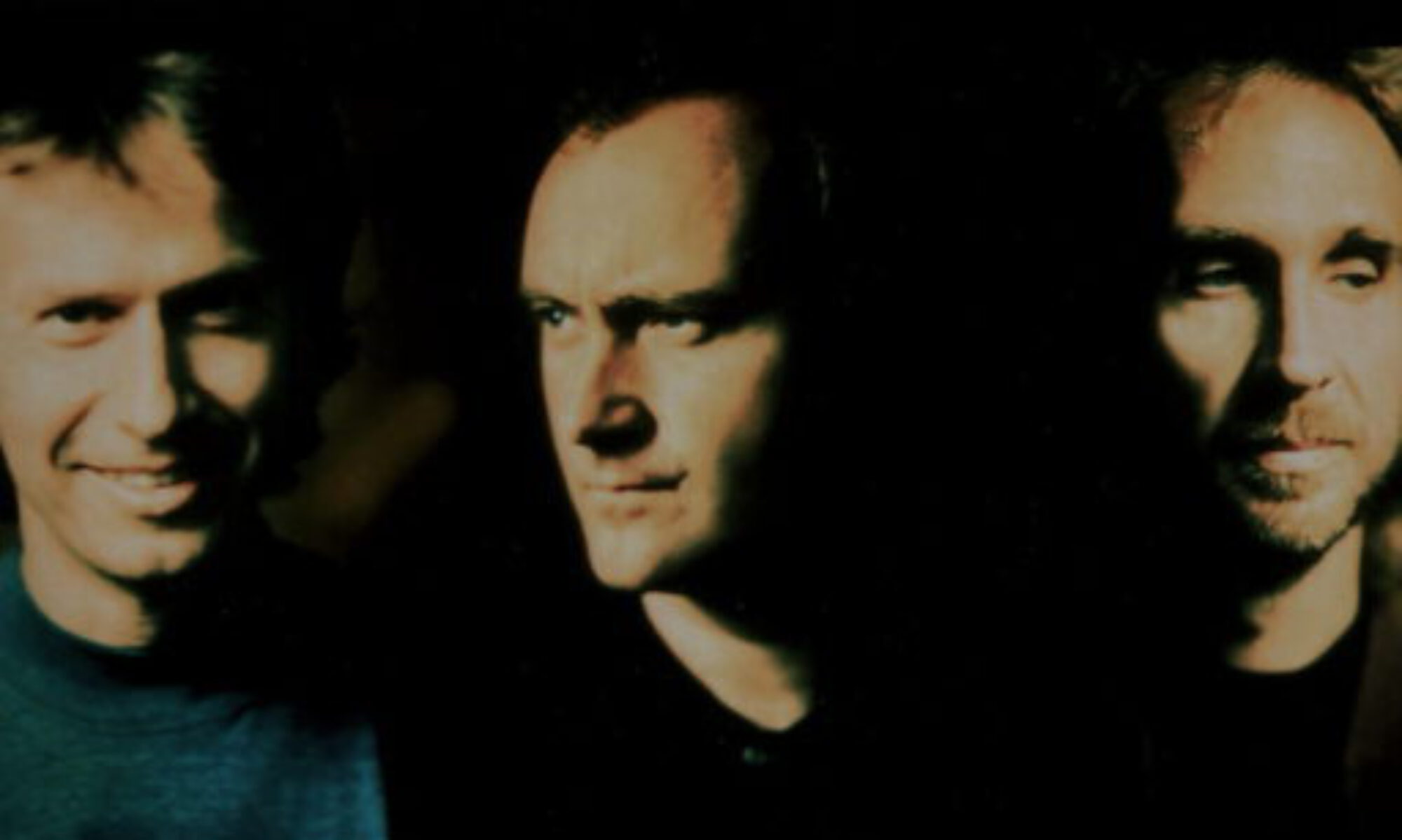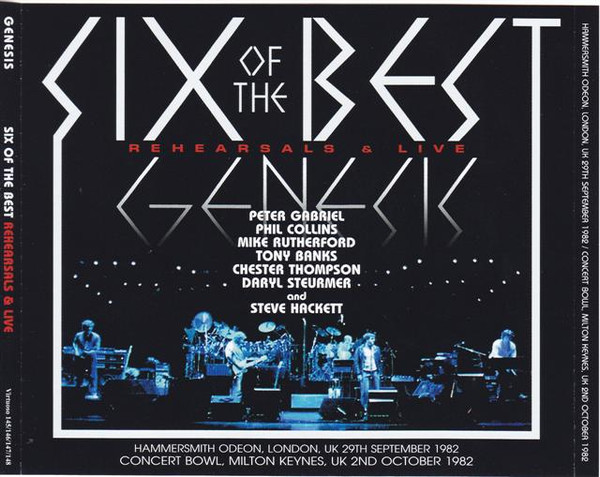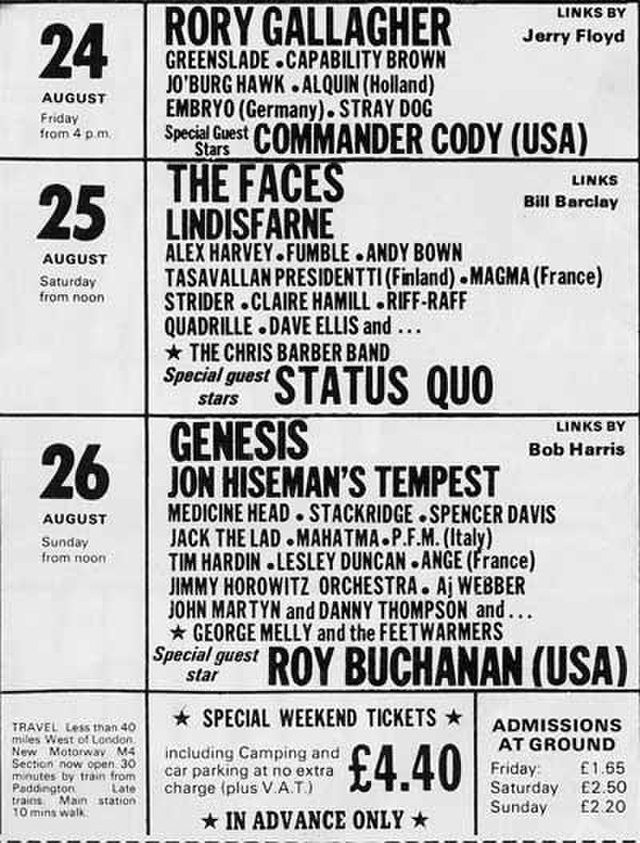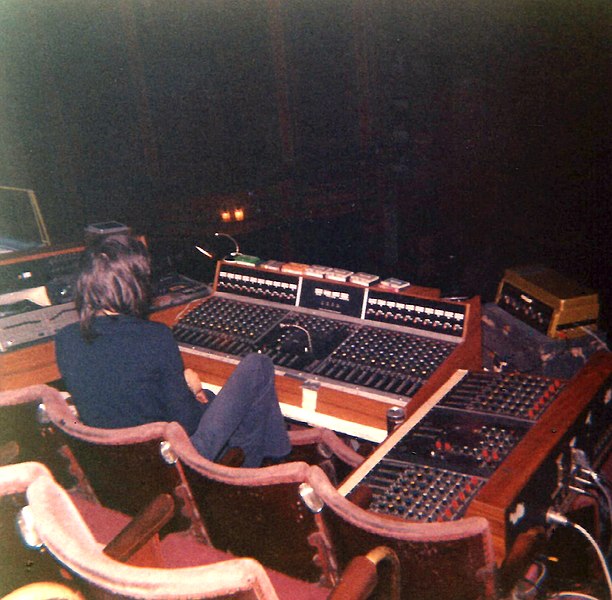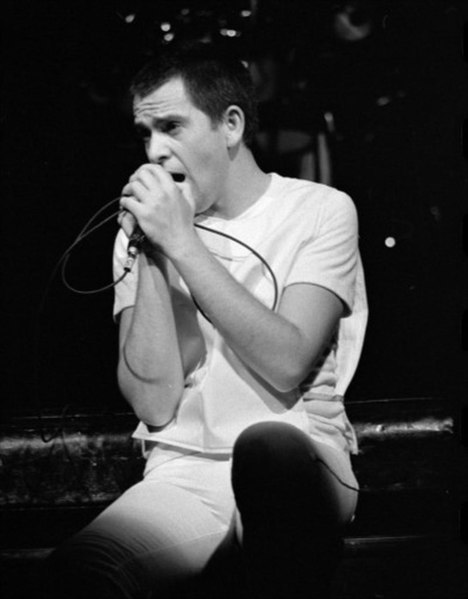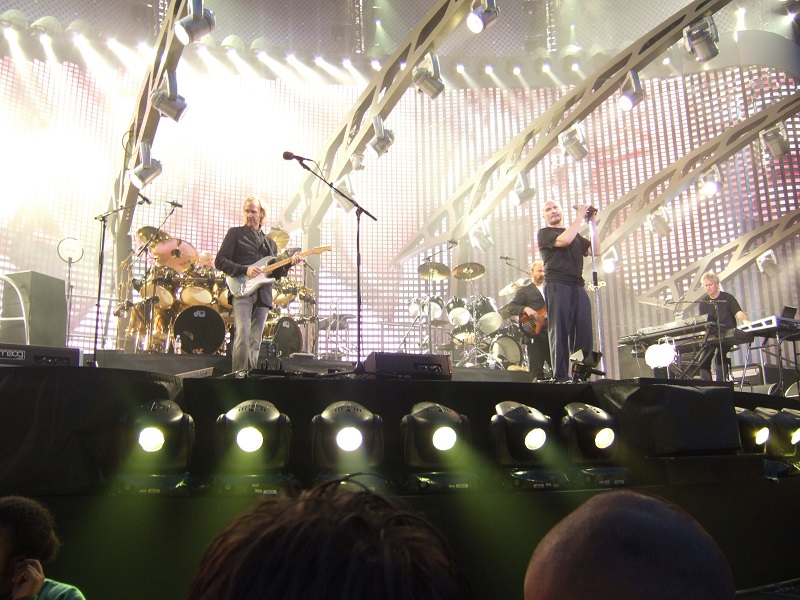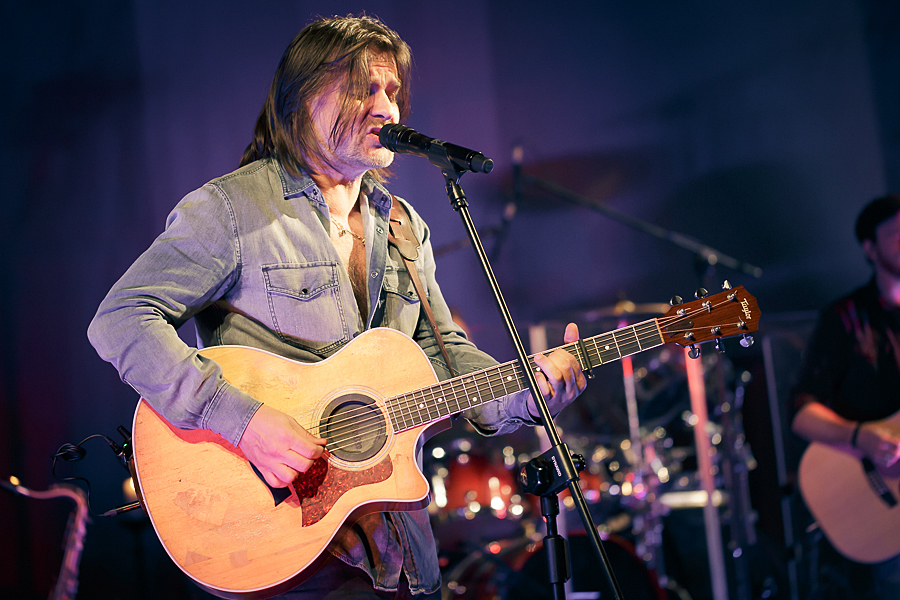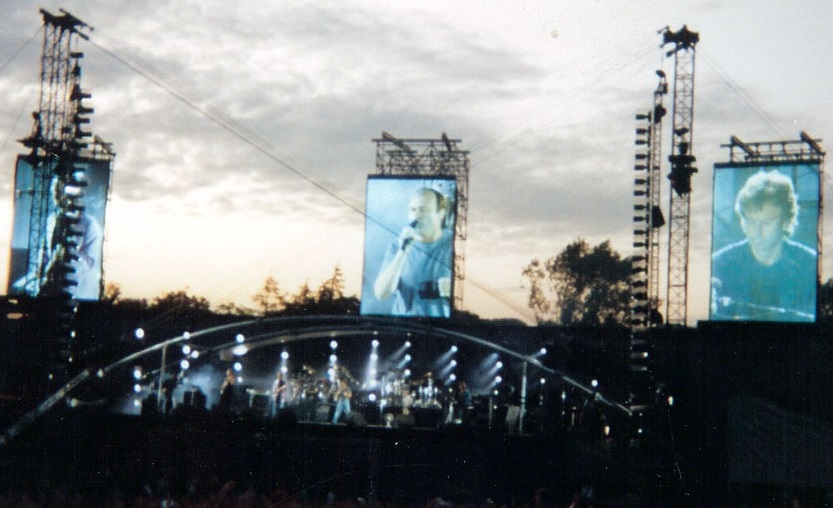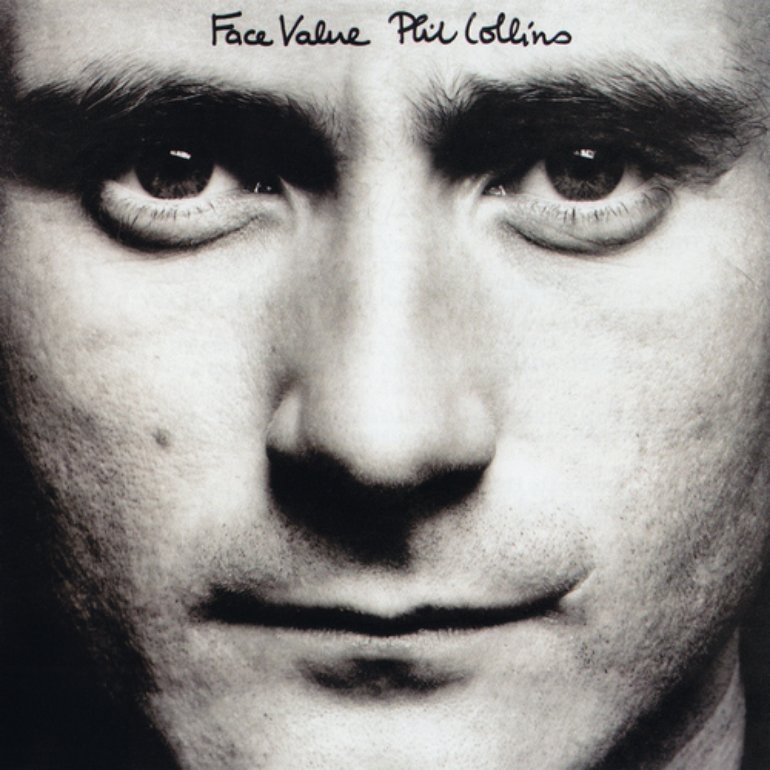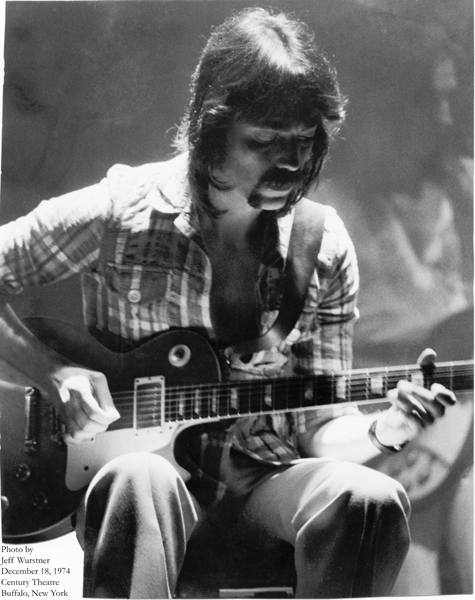On October 2, 1982, the legendary ‘Six Of The Best’ reunion show with Peter Gabriel and Genesis took place at Milton Keynes.
Continue reading “Six Of The Best”Genesis at Reading Festival 1971
On June 26, 1971, Genesis appeared at Reading Festival for the first time.
Peter Gabriel had broken his ankle
On their first appearance at Reading Festival, Genesis were low on the bill. Other artists that performed at the festival were Lindisfarne, Terry Reid, Renaissance and Sha Na Na. There were the usual problems that a festival and its visitors have to deal with: Rain, mud and an unscheduled police squad. For Genesis, the gig at Reading followed the incident at the Friars Club, where Peter Gabriel had broken his ankle.
On June 19th, Genesis had played at Friars in Aylesbury and during the encore of ‘The Knife’, Peter Gabriel had jumped into the crowd. Unfortunately, the audience parted when they saw him coming and he hit the floor, breaking his ankle. Following the incident, he played at least one show in a wheelchair at the art college in Lincoln. Tour manager, roadie, sound engineer and friend of the band Richard Macphail remembers: ‘And it scared the pants of me, because the stage was like a traditional theatre stage that sloped towards the audience. He was wildly cavorting in this wheelchair on this stage. I thought he was going to fall off the stage and break his neck!’1 Luckily, he did not and the band could play Reading Festival at June 26, 1971.
Reading Festival
The 11th National Jazz and Blues festival took place in Reading for the first time that year. Before, the event had taken place in Richmond, Windsor, Sunbury and Plumpton, but each time, the locals had complained, so the festival had to move on. The festival usually takes place in August, so admittedly it is a bit unclear to the author why the festival took place on 25, 26, and 27 June 1971. The ticket names the location as ‘Thames-side Arena, Richfield Avenue’ and the festival is titled ‘Reading Festival of folk and progressive music’. The ticket for Saturday, June 26, cost £1.50.
Over the next few years, the festival would become one of the leading British rock festivals. Not only the greatest bands of the age played there, but it was also the birthplace for future superstars. Organizer Harold Pendleton was allowed to stage the festival in Reading, because the local council wanted to celebrate the town’s 1000th anniversary and really believed it to be a jazz and blues festival, which it had originally been in the 1960s.
Genesis performed on Saturday
In 1971, Genesis was not the only act of Charisma Records that played at Reading Festival. As mentioned, Lindisfarne were there as well as Van der Graaf Generator, and Bell & Arc and Audience. Other notable acts that year were Arthur Brown, Rory Gallagher, Wishbone Ash, Medicine Head, Osibisa, Ian Matthews and Ralph McTell.
Due to their low billing, Genesis played midafternoon on the second day of the festival. Their performance was highlighted as one of the best of the event, and consequentially, they were invited back for the next two festivals.
During the summer of 1971, Genesis started to appear at outdoor rock festivals. Steve Hackett remembers that it used to rain for the first five years they played at festivals in England or Europe, always resulting in a mud bath. At Reading Festival, the power was fluctuating and the band could not get the organ in tune (and that meant that the Mellotron would be even worse to tune). They also tuned their twelve-string guitars in the dressing rooms and by the time they got on stage, they were already out of tune. Tuning a twelve-string guitar in front of an audience was almost impossible.
Not a festival band
Tony Banks thinks that Genesis were never a good festival group. It was difficult to build a dramatic atmosphere in daylight and most of the audiences did not really understand the long song with lots of chord changes. Also, the sound was mostly rubbish. Nevertheless, they builded a live following and got a reputation of being a good live band for festivals, but the best times were when they could play after dark at the end of a day with their own fans in the audience. However, at their first appearance at Reading, they already got some fans waving their Genesis flag during the gig.
Photo: Reading Festival Line Up 1973. Reading-festivaalin vuoden 1973 esiintyjälista Source: Wikimedia Commons, National Jazz, Blues and Rock Festival. / CC-BY-SA-2.5 (https://creativecommons.org/licenses/by/3.0).
* = affiliate links
- Platts, Robin, Genesis. Behind the lines, 1967-2007. (Burlington, Ont., Canada: Collectors Guide Pub., 2007), p. 44. ↩︎
Genesis first gig abroad in Belgium
Genesis played their first gig abroad in La Ferme, Woluwe St. Lambert, Belgium on March 7, 1971. This is the story of their first gig overseas.
‘Trespass’ had charted in Belgium
In early 1971, the band had not yet been very successful in the UK. But things looked different on the continent: Trespass* had reached number one in Belgium. Subsequently, the band with their new members Phil Collins on drums and Steve Hackett on guitar went there to play their first gig overseas.
The band could not afford cabins on the ferry
They crossed the channel on the night ferry and arrived the next morning. They had not slept, as they could not afford bunks and had therefore sat on the boat overnight with Phil throwing up. Getting through the day with beer and sandwiches, they drove straight to the gig and played.
The setlist
The setlist included a mixture of songs from Trespass, live favourites and two new songs. As usual during that time, Genesis started with acoustic material and then built up to the heavier numbers. Luckily for us, a recording of the gig exists so we can listen to almost the whole gig (some bits are missing). It also includes the only available recording of the famous song ‘The Light’, which features embryonic elements of later songs, notably ‘Lilywhite Lilith’.
Starting with acoustic numbers, the first song was their newest one. ‘Happy The Man’ (introduced by Peter as a song about a ‘man who eats his fingernails, probably’) is based on a Mike Rutherford riff and includes a Lindisfarne-like sing-along chorus. It was an attempt by the band to produce a hit single. The song was played a bit slower on that gig and has a very laidback attitude. ‘Stagnation’ from Trespass follows (according to Gabriel a song about people ‘with bad breath’) and Phil’s drumming adds a swing that the studio version misses.
The Light
Several minutes and attempts to introduce the band follow, then Genesis play the rare track ‘The Light’. The bass intro later became the verse of ‘Lilywhite Lilith’ on The Lamb Lies Down On Broadway* with Hackett’s guitar parts also being reused. ‘The Light’ then turns into a prog rock song with a long jam between Banks and Hackett until the nice harmony vocals go back into a part that is familiar from the later ‘Lilywhite Lilith’. In comparison to other songs of the time, ‘The Light’ seems very unusual for Genesis.
A mixture of songs from Trespass, live favourites and new songs
It is getting a bit quieter when ‘Twilight Alehouse’ begins, a live standard at the time in which Tony dominates on the dramatic organ passage in the end. Peter then introduces the other new song ‘The Musical Box’ in English and French and the live version is slightly different to the album version. There is some extra music before the ‘And the clock’ part, which is sung twice. Tony’s solo is longer and Steve’s shorter as he had only been in the band for two months. Even the iconic ending of this classic Gabriel-era tune is sung a bit differently by Peter.
The Trespass-classic ‘The Knife’ is introduced in French and the whole band rushes into the song. Tony’s organ leads them, Mike’s bass is the driving force, Steve still seems to have some trouble with the guitar solos, but is shining at the end. Peter’s flute part from the middle is unfortunately missing from the recording. The audience seems to have loved it; they applaud enthusiastically. The live classic ‘Going Out To Get You’ is the encore, described by Peter as ‘A very old number about passion’. Again, Tony leads the band and Steve seems to be non-existent on the track. It even sounds as if he is not playing with the rest of the band on this last song.
It is interesting to listen back to the recording as it not only consists unreleased songs, but also songs that were still being created lyrically and musically. And of course it features the only known recorded version of the rare track ‘The Light’.
An important gig in Genesis history
The show was a success and a very important gig in Genesis history. At the end of this trip, they took the ferry back to the UK, completely exhausted with Phil limping home, almost collapsing.
Photo: FOH PA mixing desk and associated gear for Genesis at a concert in the Liverpool Empire, 1970s, precise year unknown. Source: Wikimedia Commons, Rodhullandemu / CC-BY-SA-2.5 (https://creativecommons.org/licenses/by/3.0).
* = affiliate links
Peter Gabriel’s first solo gig
Peter Gabriel’s first gig as solo artist took place in the Capitol Theatre in Passaic, New Jersey on 2, 3 or 5 March 1977.
His first album had come out in February 1977
The album Peter Gabriel* had come out in February and had produced the hit “Solsbury Hill”. Just like for the album, the motto of the following tour was “Expect the Unexpected”. His band was a group of top studio musicians and old friends.
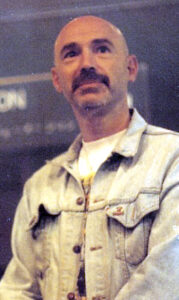
Tony Levin was there on bass and has been with Peter since then. The bass player, who had worked among others with Paul Simon, is the only musician from the first album that is still with Peter Gabriel today.
The other musicians on that first gig and the first leg of the tour were Allan Schwartzberg on drums, Larry Fast on synthesizers, Steve Hunter on guitars, Jimmy Maelen on percussion and Phil Aaberg on keyboards.
A bit surprisingly, Robert Fripp, who had been on the album, was also there on guitar; he performed on the tour as “Dusty Rhodes”, often standing behind the amps or offstage, showing once again that he did not like the rock-tour machinery. He also preferred to be introduced by Peter as the totally unknown Dusty Rhodes.
When did they play the first gig?
The first gig of the tour took place in the Capitol Theatre in Passaic, New Jersey in early March 1977. There are various dates named for his first gig: The 2nd, the 3rd or the 5th. Peter opened the show with “Here Comes the Flood” with just him on vocals and piano and Fripp’s guitar. It was a deliberate and interesting way not only to open the show, but also to present himself as a solo artist. Gone were the days of masks and costumes, here was a simple musician on the piano wearing jogging clothes. On the second song “On the Air”, the whole band set in and the groovy synths woke up the audiences and they went wild. “Moribund The Burgermeister”, which was seen by some as a throwback to Genesis, still sounded a bit stiff. “Solsbury Hill”, his first solo hit that had also introduced him to many American listeners, was also in the set. The songs were not as orchestral as on the album, but more aggressive.
Alongside the songs from Pete’s solo record there were some cover versions in the set. The inclusion of Marvin Gaye’s “Ain’t That Peculiar” was a tribute to Gabriel’s love for soul music, and the Kinks cover “All Day (And All Of The Night)” sounded rather heavy. The almost complete American band was professional, had a lot of fun (you can hear that especially in the R&B cover) and there was a relaxed atmosphere between the musicians, something that a proper band sometimes lacks onstage. Peter seemed to enjoy it a lot.
The fans expected solo and Genesis material
On the encore, he returned with Rael’s leather jacket, jeans and T-Shirt and performed “Back In N.Y.C” from The Lamb Lies Down On Broadway*. He knew that the audience expected solo and Genesis material. Throughout the set, some fans had even felt disappointment over the stark staging and that only solo songs were played. But the crowd exploded when Peter came out for the encore of “Back in N.Y.C”. It left them wanting more. And they got it. Peter Gabriel became a successful solo artist with a varied career and a distinctive identity. The fact that he once sang with Genesis only became a footnote when we look back on his career from today’s point of view.
Photo: Peter Gabriel, Chateau Neuf, Oslo, Norway. Description=Peter Gabriel at Chateau Neuf in Oslo, Norway on August 31st 1978 |Source=http://www.helgeoveras.com/gabriel.shtml |Date=August 31st 1978 |Author=Helge Øverås (https://creativecommons.org/licenses/by/3.0).
* = affiliate links
The ‘Turn It On Again’ reunion tour
On 11 June 2007, Genesis started their ‘Turn It On Again’ reunion tour in Helsinki. It saw the return of Phil Collins on vocals.
Genesis announced their reunion in 2006
On 7 November 2006, Tony Banks, Mike Rutherford and Phil Collins announced that they were reuniting as Genesis to play a series of shows in Europe in the summer of 2007 and in North America in autumn. Phil Collins had left Genesis in 1996. Although he had appeared with his former band members in the past, this was his official return. The reunion also included Genesis’ long-time live members Chester Thompson on drums and Daryl Stuermer on guitar. Both had not played with the band since 1992.
The first proper gig was planned for 11 June 2007 in Helsinki. With no new album to promote, the band had enough time to go through their material and dust off the old songs. Having not played together for 15 years, rehearsals were a bit more difficult than they all had expected.
Rehearsals for the ‘Turn It On Again’ tour
Tony Banks (keyboards) and Mike Rutherford (guitars, bass) not only had to relearn the songs. They also had to change keys so that Phil Collins, whose voice had dropped over the years, could sing the songs.
He had some trouble relearning some of lyrics. But once he did, he struggled less with them than he had in the past. Songs like ‘Domino’ and ‘Home By The Sea’ with lyrics by Tony Banks were always a challenge for him to sing. (For example lines like ‘Sheets of double glazing’ or ‘Nylon sheets and blankets’). He also listened to live recordings from the past and realized that he had often added some little extras. On this tour he went back to singing the songs the way they were written.
He also had not played Genesis songs on drums for years. On his solo tours, he had done the drum duet with Chester Thompson and played on ‘In The Air Tonight’. But now he had to get himself back in shape and play things like ‘Second Home By The Sea’. Luckily enough, Chester Thompson and Daryl Stuermer were there to back them up and help them out. Daryl had to show them how to play their own songs because he knew and had learned them so well.
But the five of them had played for so long that even after a break of 15 years, the chemistry was still there. Also, they got along much better than ever before. Tony Banks and Mike Rutherford had become looser with age whereas Phil Collins had become a bit more serious. They could talk about things they never dared say to each other 15 years before.
The setlist
And what would Genesis play on this reunion tour? They had plenty of material to choose from. Of course, there some inevitable hits that the fans wanted to hear like ‘Follow You Follow Me’, ‘Invisible Touch’, ‘Mama’ and ‘I Can’t Dance’.
They also played their hit ‘Land Of Confusion’ a bit heavier than usual. It sounded more modern, which was a nod into the direction of the band Disturbed. They had done a metal cover version of the song.
A trip down memory lane on the Genesis reunion tour
Apart from the hits, they also played more ambitious songs from their later period like the already mentioned ‘Home By The Sea’ and ‘Domino’, two of Tony Banks’s favourites. As opener, they decided to do the instrumental intro of ‘Behind The Lines’ from Duke. They added a piece of ‘Duke’s End’ and called the show opener ‘Duke’s Intro’. It was a very strong and powerful opening for the reunion shows and would always make the crowd go wild.
Overall, Phil Collins played much more drums throughout the show than he had in the past. And for ‘I Know What I Like’ he looked at the tambourine dance from 1976 and after a bit of training, was able to do it also on this tour.
Also, they dug out ‘Ripples’ from A Trick Of The Tail (the first album with Phil Collins as lead vocalist from 1976), which they had not played for years. It was a real surprise in the setlist. The same goes for a bit of ‘Duke’s Travels’ that was incorporated into a medley. The setlist was a great mixture of material from all of their history. They played songs from almost every album since 1973. The last song of the set was the Lamb-classic ‘Carpet Crawlers’ from 1974. It was always a very emotional ending for the band and the audiences.
Behind the scenes
The stage set-up for the tour came from acclaimed stage designer Mark Fisher, the lighting design came from Patrick Woodroffe. Behind the band was a huge screen which created a different look and a different setting for each song.
Producer Nick Davis supervised the sound of the band. Also, the band decided to release sound board recordings of each show through an Encore Series.
The first concert in Helsinki
And finally the first gig was played in Helsinki on a warm summer night. The band played flawlessly, the screens showed the right visuals at the right time and the audiences were happy to see Genesis again.
Phil Collins later said that some people expected them to release a new album during this period. But for him, the tour was not only a Genesis reunion tour but also a Genesis farewell tour.
The tour went on until autumn 2007 when the band played North America. After that, it seemed that Genesis had closed the final chapter. When asked what they enjoyed most about the reunion tour, they all agreed that the greatest thing was to be back with old friends and laugh together.
Photo: Genesis, ofwel: Phil Collins, Michael Rutherford, Tony Banks, Chester Thompson en Daryl Stuermer.}} |Source=Maikel Koek, via Wikiportrait |Date= |Author=Maikel Koek |Permission={{Wikiportrait|2008041010026495}} (https://creativecommons.org/licenses/by/3.0).
Ray Wilson announced as new lead vocalist
On 6 June 1997, Tony Banks and Mike Rutherford of Genesis announce the band’s new lead singer after Phil Collins’ departure: 28 year old Ray Wilson.
When it was announced in March of 1996 that Phil Collins would leave Genesis after 25 years, the public was impatient to know who would become the next lead singer of the band. Genesis had survived the loss of their first singer Peter Gabriel in 1975. And when Phil Collins left the band in 1996, the two remaining members Tony Banks (keyboards) and Mike Rutherford (guitars) decided to survive a singer’s loss once more. The two founding members of Genesis started to write and record new songs and tried to find a new singer. Music media suggested several vocalists, until on June 6th 1997, the band announced that Ray Wilson would be their new lead singer.
Ray Wilson
Ray was born in Dumfries, Scotland, on 8 September 1968. He had previously been in a band called Guaranteed Pure and was frontman for the band Stiltskin. Their biggest hit was the song ‘Inside’, used in a Levi’s commercial in 1994. The song had reached no. 1 of the charts. Ray was not an unknown singer when he joined Genesis, but theirs and Stiltskin’s music was worlds apart. His fans and Genesis fans were both surprised and suspicious.
Ray remembers on the Songbook DVD: ‘I was in my little studio writing songs. It was ten in the morning, I was making a coffee, and Tony Smith, the manager of Genesis, was on the phone: ‘Would you like to come and audition to replace Phil Collins?”
In the years before, Phil Collins’ solo success had created an image of ‘Phil Collins and Genesis’, as if Genesis was the band behind him. Filling out this role and changing this public image, would be very difficult.
Calling All Stations
Ray, Mike and Tony went into the band’s studio ‘The Farm’ in Surrey and recorded the new album Calling All Stations*. Most of the songs were already written by Tony and Mike, but Ray was able to add some of his ideas. The album was very dark and melancholic. Phil Collins’ influence on Genesis music, his energy and cheerfulness combined with Mike’s and Tony’s music, was missing. The Genesis chemistry only worked fully when all three of them worked and wrote together.
Ray’s expressive voice worked with the melodramatic music. He did a remarkable job on the album and the following tour. His voice and style was a bit closer to Peter Gabriel’s, but the music on Calling All Stations seemed to be closer to its predecessor We Can’t Dance*. Like We Can’t Dance, Calling All Stations was produced by Nick Davis.
Three singles were released from the sombre, dark record: ‘Congo’, ‘Shipwrecked’ and ‘Not About Us’. Ray co-wrote the last song as well as the songs ‘Small Talk’ and ‘There Must Be Some Other Way’. The drums on the album were played by Israeli session drummer Nir Zidkyahu and Nick D’Virgilio from American prog band Spock’s Beard.
The critics were not too kind. NMW wrote that ‘the world doesn’t care enough about Genesis to make the effort’ to buy the album and ‘like the rest of the population, they’ve forgotten why they were once any good.’ Q wrote that the album consists of ‘just darkness, confusion, individual isolation’ and described it as ‘one-paced and one-dimensional.’
Live on tour 1998
On tour, Ray proved that he could sing songs from all the eras. The setlist covered hits like ‘Invisible Touch’, ‘No Son Of Mine’ or ‘Follow You Follow Me’ (in a lovely acoustic version), younger epics like ‘Home By The Sea’ and Gabriel-era songs like ‘Carpet Crawlers’ and ‘The Lamb Lies Down On Broadway’. The new material worked well between these songs and some tracks, like the title track, were even better live. Ray, Mike and Tony were accompanied by drummer Nir Zidkyahu and guitarist Anthony Drennan, who filled the roles of Chester Thompson and Daryl Stuermer.
The album was not as successful as the ones before
But unfortunately the album was not a big commercial success when compared to the albums before. It reached no. 2 in British charts, but only no. 54 in America. Also, ticket sales were not as high was they used to be and the tour had to be minimized in terms of production and venues. The American leg of the tour had to be cancelled completely. So after the 1998 tour, Tony Banks and Mike Rutherford decided to put Genesis to rest.
It was not to be the end of Genesis. But back in 1998 it looked like it. Unfortunately, Ray Wilson, who had been thrown into this situation, was even made responsible by some fans and critics. This is simply not fair. Ray has a unique voice and delivered the songs – his own and Peter’s and Phil’s – in a special way.
After the end of Genesis, Ray took some time to recover and has since started a solo career. He releases solo albums and still plays some Genesis and Genesis-related songs during his live shows.
Title photo: Ray Wilson live in Dortmund in 2017 (Photo: André Wilms of ‘The Photography Of Mister Ilms)‘.
Listen to live versions from the 1998 tour with Ray on “Genesis – BBC Broadcasts” – Get it here!*

Genesis Music on Amazon*
*= Affiliate Link
‘We Can’t Dance’ in Tampa – The story of the 1992 tour
Tampa, Florida, 17 May 1992. Genesis leave the stage at the fourth show of their gigantic We Can’t Dance tour after just two songs. They leave behind an almost rioting audience. The band had to cancel the show after ‘Land Of Confusion’ and ‘No Son Of Mine’ due to Phil Collins’ throat problems. Luckily enough, this was just a one-time affair. The We Can’t Dance tour became one of their biggest productions in terms of stage setup and venues.
Let’s take a look back at the massive production of the We Can’t Dance tour.
We Can’t Dance
We Can’t Dance*, the band’s fourteenth studio album, was released in 1991. It was another monumental blockbuster and a huge success all over the world. Despite being in the business for almost 25 years, Genesis still reached top of the charts. In terms of sales, We Can’t Dance was one of their most successful albums. It produced four hit singles: ‘No Son Of Mine’, ‘I Can’t Dance’, ‘Hold On My Heart’ and ‘Jesus He Knows Me.’ All of them were accompanied by elaborate music videos. Especially ‘I Can’t Dance’ and ‘Jesus He Knows Me’ stand out for their high production and sense of humour.
Massive venues and Jumbotrone video screens on the We Can’t Dance tour
Of course, this blockbuster of an album had to be followed by a massive tour. Over 60 concerts were planned for North America and Europe in 1992. The band decided to play stadiums, although they were not too happy to play bigger venues. But the idea of playing three months of stadiums instead of ten months of arenas appealed to them. They did not want to be on tour for too long.
Therefore, the stage set up reached another level on this tour. With new technology available, three Sony Jumbotron video screens were put behind the stage so that everyone in the stadium, right to the back, could witness the action onstage. The band rehearsed in the Goodyear blimp hanger in Houston. It was one of only a few spaces that was large enough to accomodate the new stage set-up.
The setlist
Phil Collins, Mike Rutherford and Tony Banks were of course accompanied by their long-time live members Chester Thompson and Daryl Stuermer. The band rehearsed for a few weeks. The setlist included mainly material from the new album. They added a few tracks from its predecessors Invisible Touch* and Genesis* and the inevitable ‘Turn It On Again’ as an encore. A 20-minute medley was played that included the band’s most prominent material from the 1970’s. It was different to the ‘In The Cage’-medley they had played for 15 years and a welcoming change.
Leaving the stage in Tampa, Florida
They started the tour on 8 May 1992 in Texas. On the fourth night of the tour in Tampa, Phil Collins’ voice gave up. When necessary, he had supported his voice with various medical methods on tour. And he knew that a stadium full of fans could sing the songs word by word and help him out. But on that night he could not continue. The band left the stage after just two songs, ‘Land Of Confusion’ and ‘No Son Of Mine.’
But his voice worked for the rest of the tour. They ended the first leg of the tour with a huge open-air show in Knebworth Park in August that was broadcasted on Premiere. In the autumn of 1992, the band continued their tour and played various cities in their home country. Throughout the 80’s, the had not played that many shows in Great Britain. On this leg of the tour they made up for that. The concerts at Earl’s Court in London were filmed for video and later DVD release: The Way We Walk Live in Concert.
Purchase The Way We Walk Live In Concert here at Amazon*
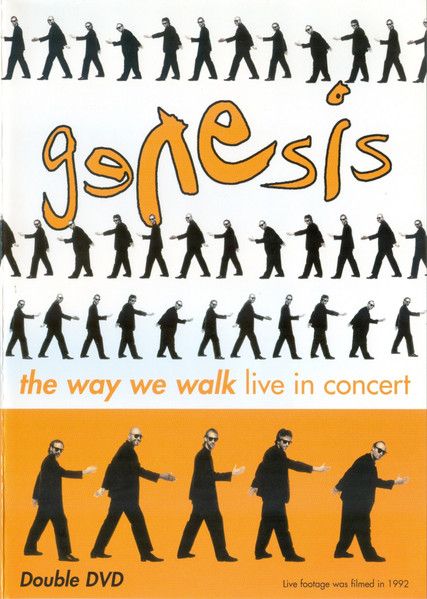
“The Way We Walk”
The tour also produced a double live album, Live – The Way We Walk (The Long And The Shorts). It was split into The Shorts* and The Longs instead of splitting an entire show in its middle. Some fans did not like this approach, but at this point in Genesis history, it was a wise decision. Many listeners knew them for their single hits. Other fans just liked their long and epic songs. In later releases of the double live album, the songs were put into the right order.
Purchase “Genesis – The Shorts” here at Amazon*

Purchase “Genesis – The Longs” here at Amazon*
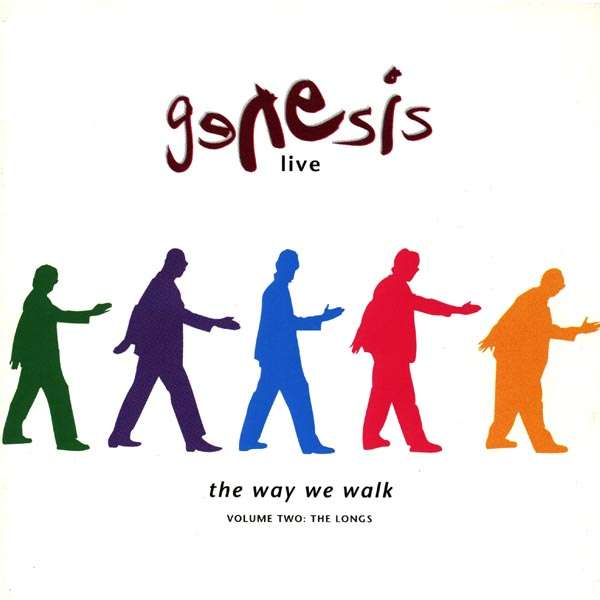
The tour turned out to be Genesis last with Phil Collins until 2007. It was also the last tour for drummer Chester Thompson and guitarist/bassist Daryl Stuermer until 2007. By the end of 1992, none of them knew. Also, the fans did not know that they had witnessed Genesis for the last time in this incarnation (if they even to to see the 1992 tour). But as we know, the band got together again 15 years later. But that is another story.
Title photo: Genesis Live- Land Of Confusion. Photo taken during the performance by Genesis of “Land of Confusion” in Knebworth, England (August 2nd, 1992). Source: Wikimedia Commons, Manny Hernandez/ CC-BY-SA-2.5 (https://creativecommons.org/licenses/by/3.0).
Listen to live versions from the 1992 gig at Knebworth on “Genesis – BBC Broadcasts” – Get it here!*

Genesis Music on Amazon*
*= Affiliate Link
Live at the Roundhouse 1970
On 11 March 1970, Genesis played one of the biggest gigs of their early career at the Atomic Sunrise Festival at the Roundhouse Club in London. The event featured artists like David Bowie and Hawkwind and was sponsored by Yoko Ono. A few weeks later Genesis signed to the Charisma label.
Genesis in early 1970
At the beginning of 1970, Genesis were writing and rehearsing new music for their second album. Their debut album* had failed to chart and they had quit their contract with producer Jonathan King and the Decca label. The new songs were more adventurous and experimental and far from the pop tunes of their first album. The band consisted of Peter Gabriel (vocals), Tony Banks (keyboards), Ant Phillips (lead guitar), Mike Rutherford (guitar and bass) and John Mayhew (drums).
Genesis opened for David Bowie at the Roundhouse
The band and its members were still very young at the time and far from being famous. So the infamous hippie-festival at the Roundhouse was their biggest gig up that point. Especially as they were booked to open for David Bowie.
Both Tony Banks and Peter Gabriel were huge fans of David Bowie. Space Oddity* had been released the year before and Bowie was a rock star already. In these days, Bowie and his band appeared on stage in a very theatrical way. Gabriel was impressed and a little later, he used costumes and masks onstage himself. His outfits and theatrical performances leaped Genesis on another level in terms of popularity. Tony Banks on the other hand was a bit disappointed that Bowie and his band put so much focus on the visuals instead of the music. Unbeknownst to them, this gig might have been the beginning of a conflict within Genesis. The conflict grew when Peter Gabriel himself started to dress up and the other band members felt that the stage show distracted from the music more and more.
Yoko Ono sponsored the Atomic Sunrise Festival at the Roundhouse
At the festival, the band played songs that would appear on their second album Trespass* later that year. Video snippets exist that show the band performing ‘Looking For Someone’ and ‘The Knife’. Apparently, ‘Twilight Alehouse’ was also played. Ant Phillips jokingly admits that this footage is the only visual proof that he ever performed with Genesis.
Althought the gig was a big one for the band, they were not too happy. Peter Gabriel remembers that there were more people onstage than in front of the stage. Ant Phillips was frightened and nervous. His stage fright was one of the reasons he left the group later that year.
Still, Tony Banks and Ant Phillips were both impressed by the professionality behind the scenes. Every gig of the festival was recorded on 8-track equipment and part of it was filmed. As Yoko Ono sponsored the gig, there might be a chance that the complete film footage still exists in the Apple archive.
A couple of weeks after the gig, Genesis signed their new contract with Charisma and later that year, they released their second album Trespass. Ant Phillips left the same year and a new drummer took over in summer of 1970…but that’s another story.
Title photo: Genesis mixing desk 2 – Revox A77 and associated gear for Genesis at a concert in the Liverpool Empire, 1970s, precise year unknown. Source: Wikimedia Commons, Rodhullandemu / CC-BY-SA-2.5 (https://creativecommons.org/licenses/by/3.0).
* = affiliate links
Face Value (1981) – Phil Collins
In February 1981, Phil Collins’ first solo album Face Value was released. It went straight to number 1 in the UK charts and to number 7 in the US. His debut was his gateway into superstardom and includes his signature track ‘In The Air Tonight’. Let’s take a closer look at the album that turned Phil Collins from Genesis front man into one of the biggest solo artists of the 1980s.
Genesis touring life
By the time Phil Collins wrote the songs for what would become Face Value*, he was a broken man. The drummer of Genesis had become the singer of Genesis in 1976. In 1978, the group released the album …And Then There Were Three*, which included their first big hit single ‘Follow You Follow Me’. The group had become a trio: Tony Banks on keyboards, Mike Rutherford on guitar and bass and Phil Collins on drums and vocals. On …And Then There Were Three, they had moved towards shorter, simpler songs with direct lyrics.
Following the album, the band went on a massive tour that also took them to Japan. Banks, Collins and Rutherford were joined by drummer Chester Thompson, who had played with them on the previous tour, and by Daryl Stuermer for the first time , who became their live guitarist and bassist after Steve Hackett had left the band. This five-piece group would be the Genesis (live) line-up until 2007 (with a short interruption in the 1990s, but that is another story).
Before going to Japan, Phil’s wife Andrea told him that she and the kids would leave if he went on that tour. When Phil returned home, he realized that she had made her promise come true. In an attempt to save his marriage, Phil followed his wife and children to Canada in 1979, but things did not work out and he returned to England alone.
A broken marriage
Phil spent his time alone in his house in Surrey and started to write songs to express his feelings. He sat down at the piano and played along to the drum machine while improvising lyrics. Up to that point, he had not been a songwriter in Genesis . When Tony, Mike and Phil got back together to record their 1980 album Duke*, Phil brought in some demos to Tony and Mike’s surprise. They liked his simpler, more direct approach and chose two of his songs for Duke: The swinging ‘Misunderstanding’ (which turned out to be a big hit in America) and the very personal, heartbreaking ballad ‘Please Don’t Ask’.
When band manager Tony Smith came to visit Phil and listened to the other demos, he suggested to put them out as a solo record. Mike and Tony had already released solo albums during his time in Canada in 1979. Phil took his demos to producer Hugh Padgham, whom he knew from working together on Peter Gabriel’s third solo record, and they turned them into an album. The album became hugely successful and is considered one of Phil’s best.
In The Air Tonight
The opening track ‘In The Air Tonight’ with its dark, eery chords set the mood for the album. The song builds up tension over an interesting drum machine rhythm that finally bursts when the real drums come in with the famous fill-in. The lyrics were mostly improvised and the drum fill was pure coincidence. Had they used another take, maybe another drum fill would be considered the most famous drum fill of all time. The song went to no. 2 in the UK charts has always been the highlight in every Phil Collins show.
The Phenix Horns
The next single, ‘I Missed Again’ is a funky, up-beat song that features a brass section: The Phenix Horns, who played with Earth, Wind And Fire. The horn sections would become a trademark of many of Phil’s solo hits over the decade.
Apart from the hits, the album shows Phil playing with different styles. The ballad ‘You Know What I Mean’ is only him on piano and vocals. The instrumental ‘Hand In Hand’ plays with influences from jazz and black music and was a great show opener in later years as it showcased the talent of every musician involved.
Everything that would define the solo artist Phil Collins was born on Face Value and is presented there in its purest and rawest form. Maybe that is why many fans consider it one of Phil’s best albums. And unlike some of his other works, it definitely stands the test of time.
* = Affiliate Marketing Link
Steve Hackett’s first gig with Genesis
On 14 January 1971, Steve Hackett played his first gig with Genesis at University College, London. It was not the best start for the guitarist.
When Steve joined in late 1970, Phil Collins had already been in the band for a few months. Since then, Genesis had performed as four piece: Tony Banks on keyboards, Mike Rutherford on guitar and bass, Phil Collins on drums and Peter Gabriel on vocals.
Steve Hackett was quite nervous before he played his first gig with Genesis. On 14 January 1971 the band played at University College in London. They came in the afternoon, the stage was set up, they did a soundcheck and had something to eat and a few drinks.
Phil decided to test the rule of how many Newcastle Brown Ales you could drink and still play the drums
On this evening, Phil decided to test the rule of how many Newcastle Brown Ales you could drink and still play the drums. By the time the band was onstage, he did all the right fills but three inches to the right of each drum.
The usual equipment problems of the early Genesis days kicked in
For nervous Steve, the whole gig was a nightmare. Not only because of Phil’s experiment, but also because the usual equipment problems of the early Genesis days kicked in, when his fuzzbox did not work properly.
After the show he thought that he had failed and the others did not want him in the group. He heard Tony Banks and Mike Rutherford arguing with Phil backstage and thought it was about him. Of course they gave Phil a hard time because of his performance!
Although this certainly was not the best first gig for Steve Hackett, the audiences were happy and the band wanted him to stay. They liked his contribution and played more gigs throughout the year and recorded their first album together, Nursery Cryme*. But that is another story in Genesis history.
Title photo: Wikimedia Commons, Jeff Wurstner / CC BY (https://creativecommons.org/licenses/by/3.0)
Purchase Nursery Cryme here on Amazon*
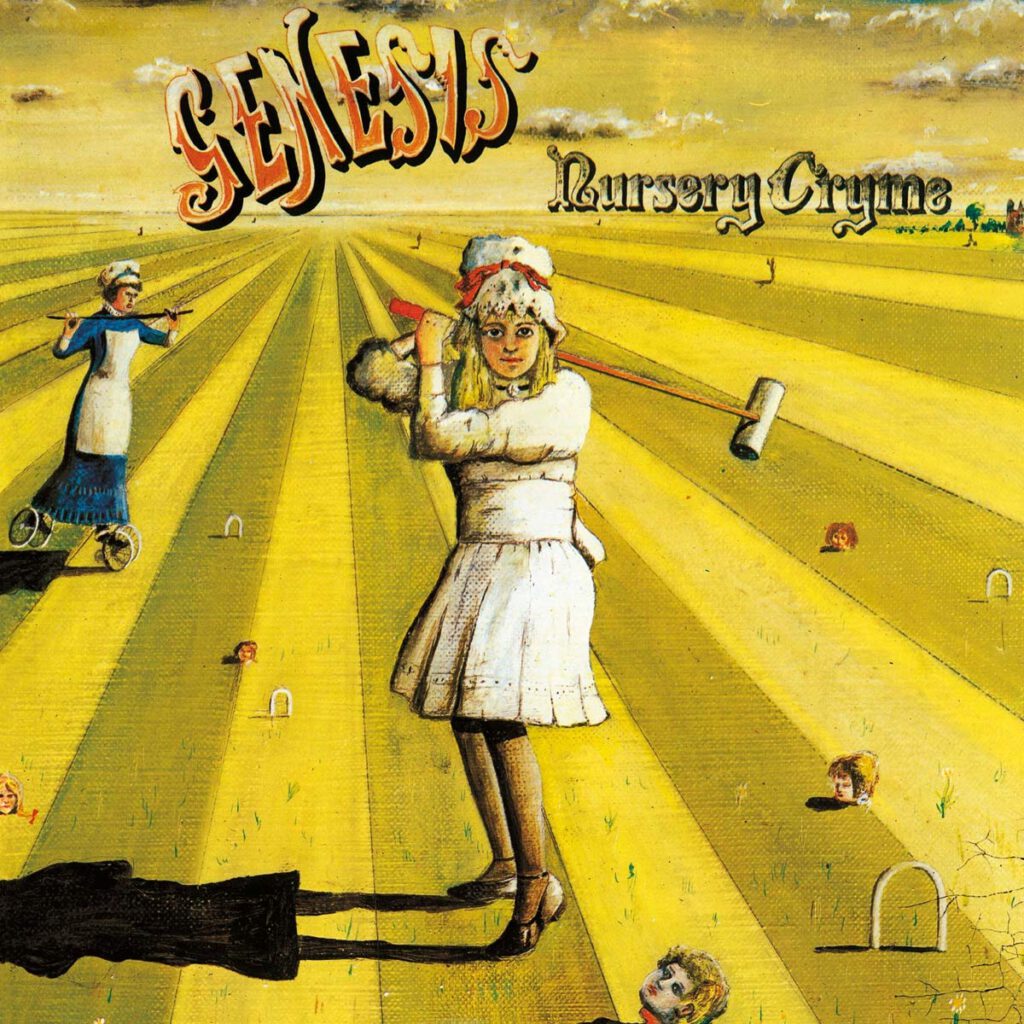
* = Affiliate Marketing Link
